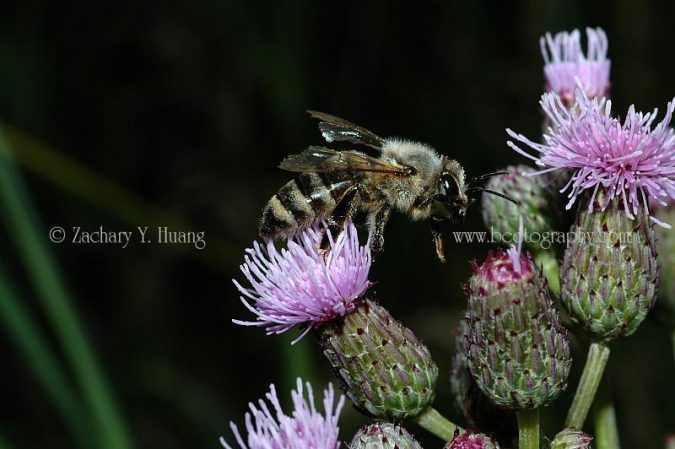| Family: | Asteraceae |
| Genus: | Cirsium |
| Species: | C. arvense |
| Common names: | creeping, field thistle |
| ZBAS | 8 |
OK, I start with the bad news: Canada thistle is a perennial that farmers hated in America since European settlement (thus, not a native species), and is considered a (ab)noxious weed in many states. It is adapted to a wide range of soil conditions, and spreads easily by wind-borne (cotton-like) seeds and also by its creeping root system.
The good news: honey bees will work on this flower for both nectar and pollen. I am not clear if you can get a crop or not. But I have some growing right near my hives in one yard. It is very prickly so I remove those near the hives.
1. Cell phone photo showing they are growing at my bee yard, about 4.5 ft tall.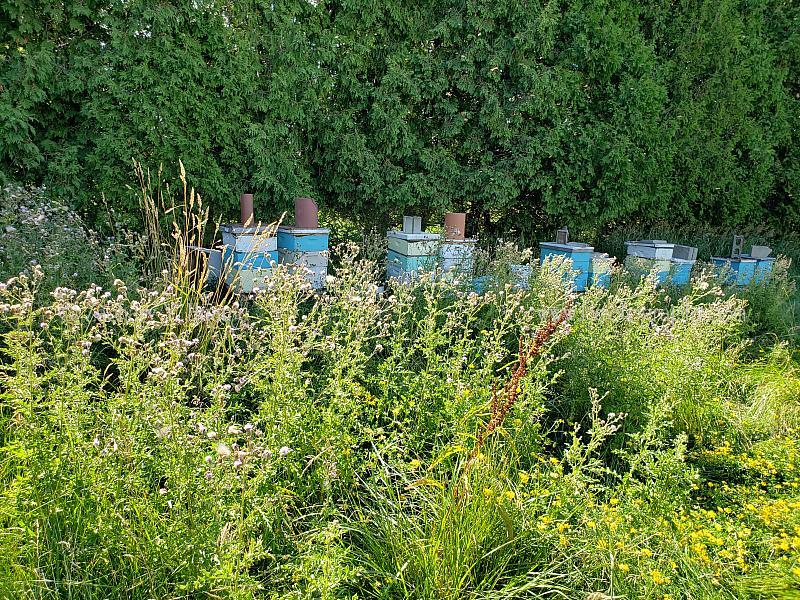
2. All photos (except #1 and 6) were shot on July 12, 2005, I think at a house near the campus. A bee working on a flower with her head toward the camera. 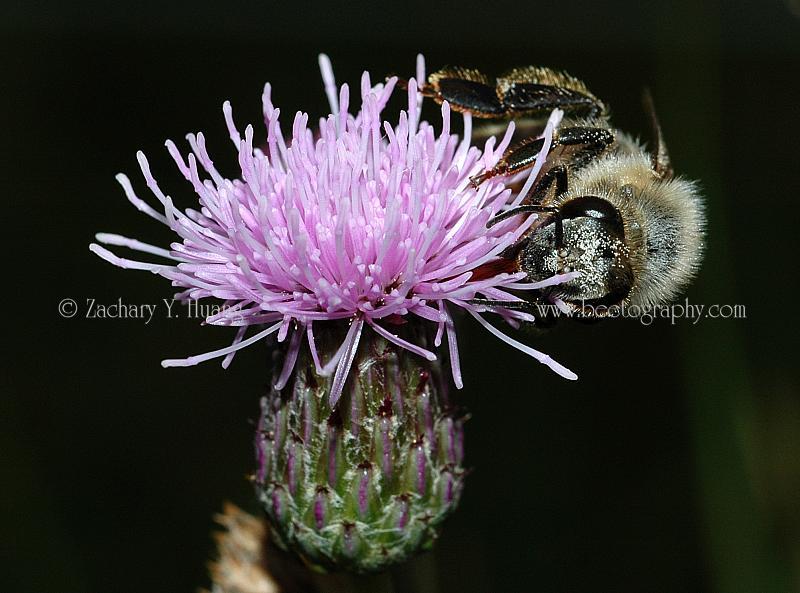
3. A bee trying to crawl over to a next flower – bees often do this, if they can reach something without flying, it saves energy!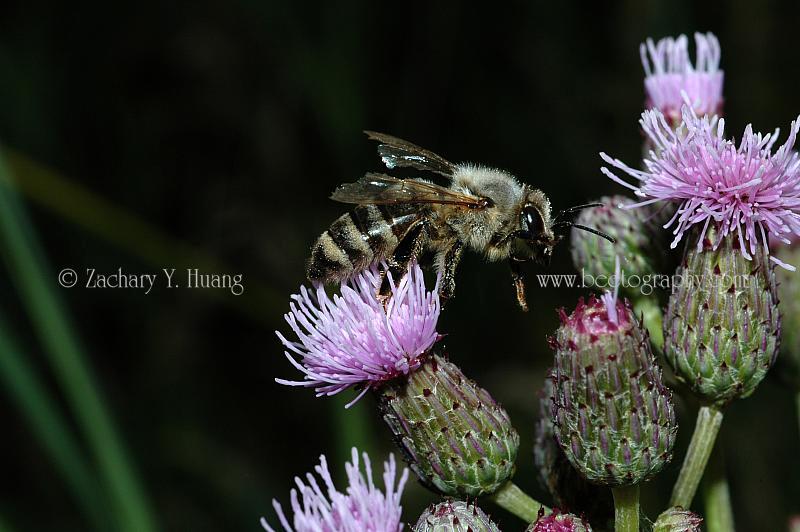
4. Two bees working side by side. 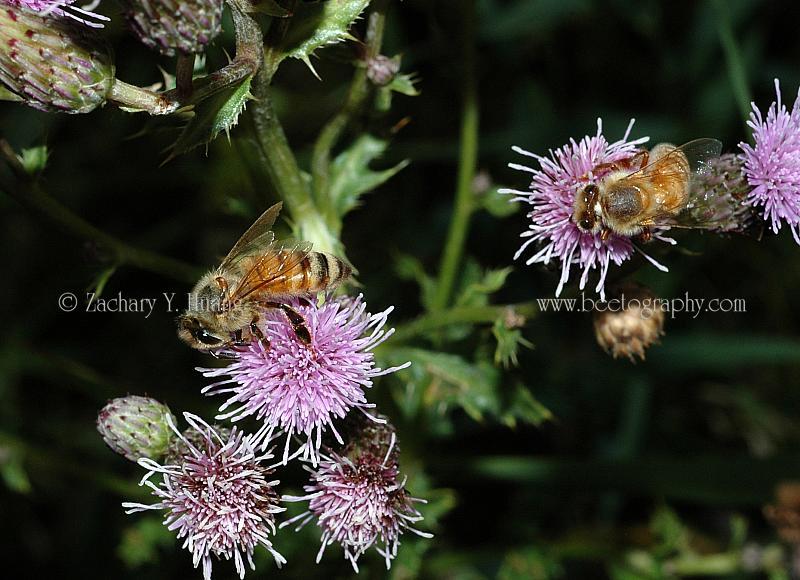
5. Three bees! 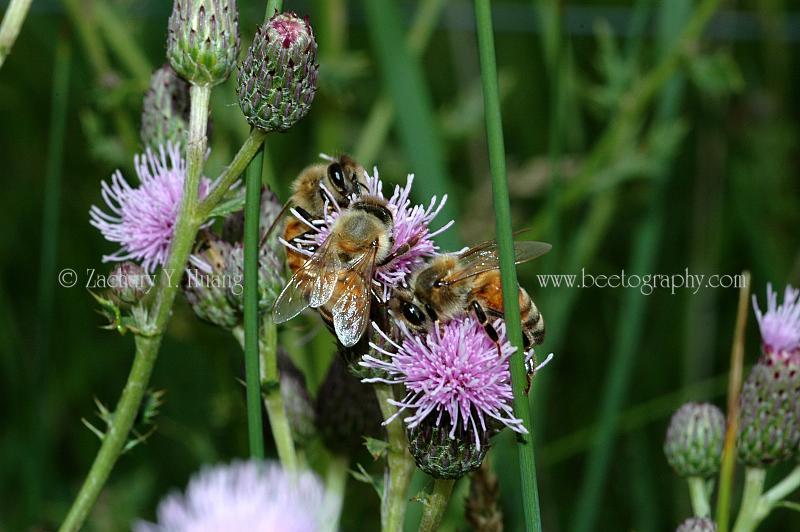
6. This one was shot this year, July 13, 2020, using my cell phone. Cell phones have tiny sensors, so even if it has 12 megapixels, at 100% crop it will be horrible (noisy and not sharp), but for web use it is more than enough. In addition, due to the small sensor size, the depth of field will be too large, allowing you to see too much background. No pretty “bokeh” like a DSL camera.
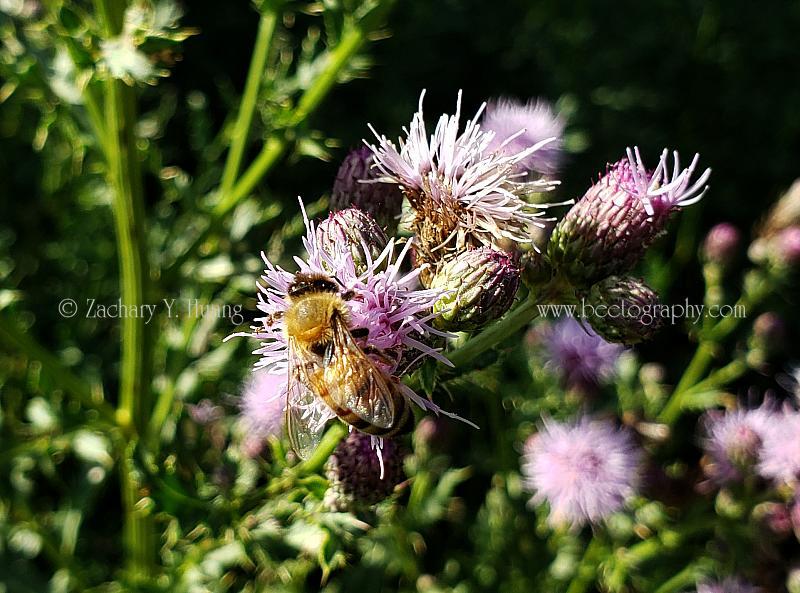
7. This is back to the camera showing you the blurred/smoothed out background, which is the called the “bokeh”. Many people consider this more pleasant than the cell phone shots which shows too much of far away background (which causes distraction for one thing).
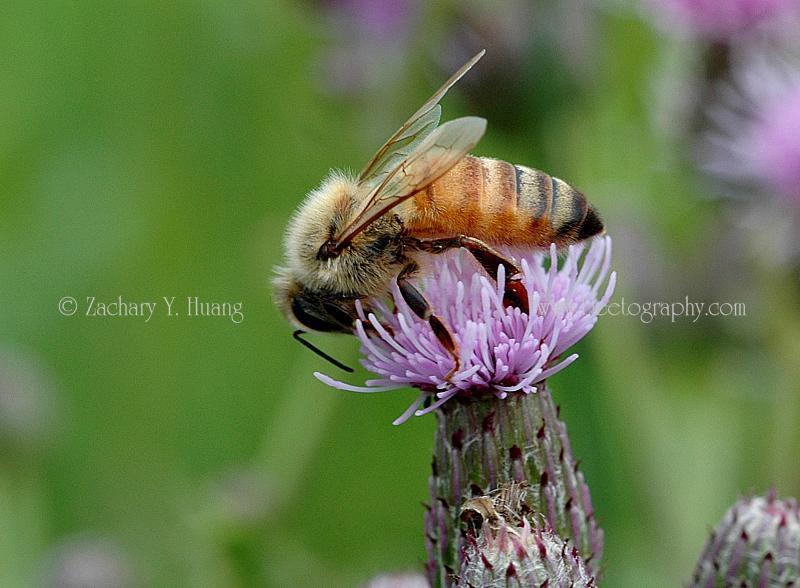
Thank you! Zachary Huang
Posted July 21, 2020.

